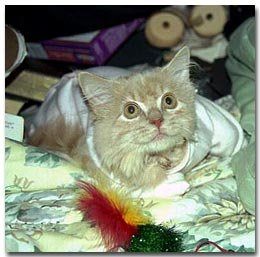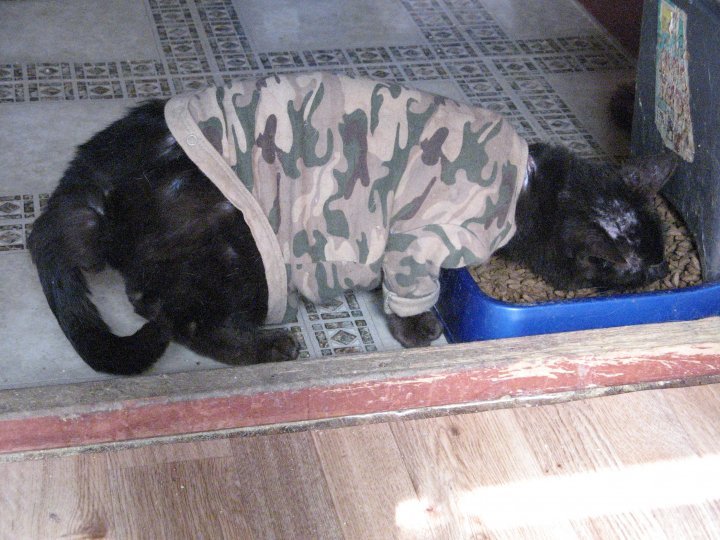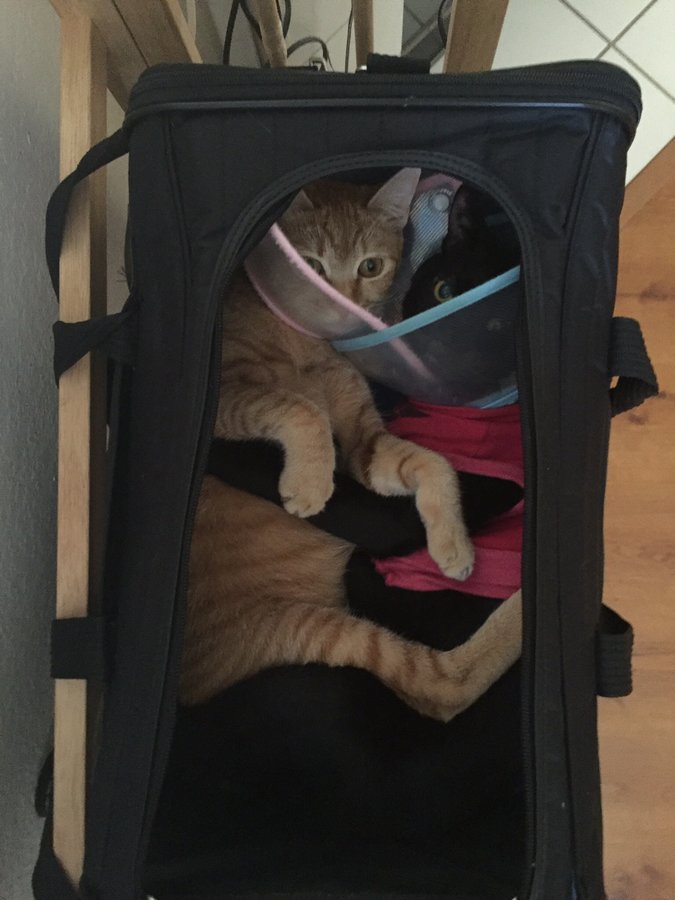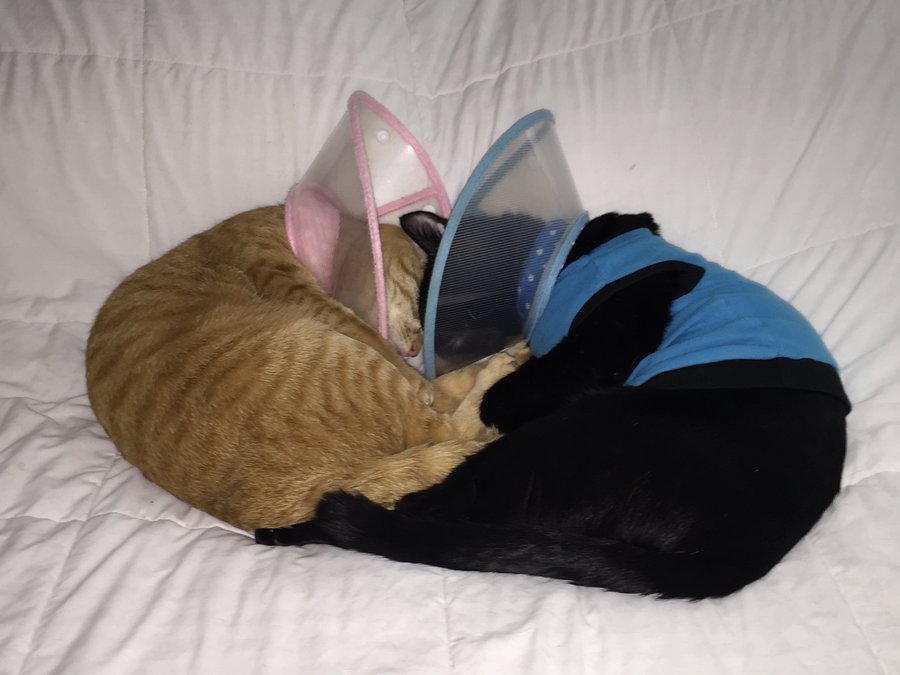- Joined
- Aug 30, 2005
- Messages
- 56
- Purraise
- 13
So.... apparently my 11 and a half year old cat has this and we're just finding out about it now... From the research I've been doing it seems like it should have been something that was debilitating from a young age, but he's been a somewhat normal cat up until a few months ago when he started loosing muscle tone and developed some odd alopecia. He (thank heavens) doesn't have the typical splitting wounds.
We haven't been able to afford biopsies yet, but he has a skin extensibility index of at least 23%. (At that point he was well past the 19% needed to declare the disease and it wasn't worth pushing him to the point of pain.) So yeah, it's basically a done deal. He looks like he's wearing a baggy grey sweatshirt all the time.
Does anyone here have any first hand experience with this disorder? I keep being told it's "really rare", but I'm not sure that what means exactly.
What I am also having trouble finding is anything about older cats with this disease, and how it may progress.
He's always been abnormally saggy (he had a hanging throat waddle from when I first got him when he was a year and a half old), but he's never had a problem with wounds or with his joints as far as I can tell. (Although he has always been a whiny little you know what at times, and that may have been from joint discomfort.) He's also a very large male cat, and he's always been slightly overweight. Once we learned about this disease and started doing research, there's been other little things that spring to attention in his past that makes me wonder how long he's been slightly symptomatic. I remember once he somehow pulled a big chunk of hair/skin out of his side and he had a gaping wound, and the vet grilled me about if I had burned him because the wound didn't look natural. (I was ticked. Loved the vet even more afterwards, but still, ticked that he though I would have been that kind of a person.) Now I'm coming to find out that this disorder leads to wounds that behave in just that manner.
Anyway, since there's no treatment or cure besides euthanasia (seriously, I've been reading the medical papers on this disorder and that's what they all say), we're basically on a watch and wait. Either he stays steady where he's at (and he is still okay), or he gets worse and... yeah. In the meantime this kitty mama needs to learn as much as she can! It's going to be the only way I'll calm down about this whole ordeal.
(Also, I hope I'm not the only one who has seen more then their fair share of "rare" diseases in cats. This is number.... 6? 7? I've lost count. Doesn't make me think very highly of veterinary medicine if we keep finding these cats over and over and over again that have disorders that are so "rare"!)
We haven't been able to afford biopsies yet, but he has a skin extensibility index of at least 23%. (At that point he was well past the 19% needed to declare the disease and it wasn't worth pushing him to the point of pain.) So yeah, it's basically a done deal. He looks like he's wearing a baggy grey sweatshirt all the time.
Does anyone here have any first hand experience with this disorder? I keep being told it's "really rare", but I'm not sure that what means exactly.
What I am also having trouble finding is anything about older cats with this disease, and how it may progress.
He's always been abnormally saggy (he had a hanging throat waddle from when I first got him when he was a year and a half old), but he's never had a problem with wounds or with his joints as far as I can tell. (Although he has always been a whiny little you know what at times, and that may have been from joint discomfort.) He's also a very large male cat, and he's always been slightly overweight. Once we learned about this disease and started doing research, there's been other little things that spring to attention in his past that makes me wonder how long he's been slightly symptomatic. I remember once he somehow pulled a big chunk of hair/skin out of his side and he had a gaping wound, and the vet grilled me about if I had burned him because the wound didn't look natural. (I was ticked. Loved the vet even more afterwards, but still, ticked that he though I would have been that kind of a person.) Now I'm coming to find out that this disorder leads to wounds that behave in just that manner.
Anyway, since there's no treatment or cure besides euthanasia (seriously, I've been reading the medical papers on this disorder and that's what they all say), we're basically on a watch and wait. Either he stays steady where he's at (and he is still okay), or he gets worse and... yeah. In the meantime this kitty mama needs to learn as much as she can! It's going to be the only way I'll calm down about this whole ordeal.
(Also, I hope I'm not the only one who has seen more then their fair share of "rare" diseases in cats. This is number.... 6? 7? I've lost count. Doesn't make me think very highly of veterinary medicine if we keep finding these cats over and over and over again that have disorders that are so "rare"!)




















 So long as you stay calm (and have plenty of treats on hand for after
So long as you stay calm (and have plenty of treats on hand for after 

